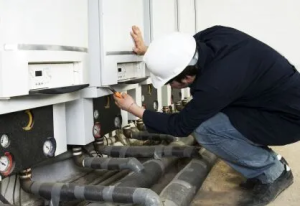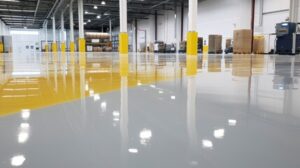Gutters allow water to flow off the roof and away from the foundation of a building. When they are clogged with debris, the water can cause damage to the structure of the house.
Gutter cleaning is not an easy task. Before you start, make sure to wear eye protection as it can be dirty and dangerous. Contact Gutter Cleaning Summerville SC now!

The gutter system of your home is designed to channel rainwater away from the fascia, soffit, and foundation. When these channels are clogged with debris, water may start to pool along the edge of your roof. When this happens, it can cause a variety of problems. The extra moisture can damage the shingles, causing them to deteriorate and leak. It can also seep into the house, causing mold, wood rot, and other issues. Regular gutter cleaning prevents these problems by ensuring that water is draining properly.
Gutter cleaning includes removing all debris from the gutters and downspouts, testing downspouts for proper flow, and cleaning up any dropped fasteners or other waste. The crew also inspects the gutters and downspouts for sags, leaks, and other structural issues. If any problems are detected, the crew will make repairs as needed. The inspection and cleaning process can take up to a day depending on the size of your home and the condition of the gutters.
Another important benefit of having your gutters cleaned regularly is the prevention of pest infestation. Standing water and accumulated debris in your gutters create an ideal environment for pests to breed and nest. Mosquitoes, rodents, birds, and insects that nest in clogged gutters can spread disease and damage your roof and home. The pests can also create entry points for moisture into your home, resulting in costly damage and repair bills.
Clogged gutters can also lead to foundation damage. When water spills out of the gutters and down the side of your home, it can flood the soil around the foundation and seep into the basement or lower levels of the house. This can damage the concrete foundation and lead to expensive repairs. Regular gutter cleaning can help protect your foundation by ensuring that water is flowing away from the house and not toward it.
Prevents Water Damage
Gutter cleaning is one of the most important home maintenance tasks for preventing water damage. Clogged gutters can cause rainwater to overflow and accumulate in the foundations of your house, resulting in basement flooding, mold growth, and other expensive repairs. Gutters direct rainwater away from the roof and foundation of a building to prevent water-related problems, but they can become overflowing with debris such as leaves, twigs, and moss. Over time, this can corrode the gutters and cause them to break. This can lead to water-related issues such as foundation and wall cracks, as well as leaking roofs and walls.
Regular gutter cleaning eliminates the accumulated debris and decomposed organic matter that promotes the growth of mildew and mold around the house. These organisms are harmful to the health of your family and may cause respiratory issues. In addition, clogged gutters attract pests such as mosquitoes and rodents seeking shelter and moisture.
In addition, clogged gutters block the flow of water and ice from your roof, which can cause the shingles to separate and open a way for roof leaks. This can be dangerous for your family and pets, especially when it leads to the formation of icicles, which can be heavy and dangerous to climb.
Gutters that are clogged with debris can also lead to the overflow of rainwater and damage your home’s siding. This can affect your home’s value and appearance, as well as the landscaping surrounding your home. Regular gutter cleaning eliminates the accumulated debris that can overflow and protects your home’s siding and landscape from water damage.
Gutter cleaning is a labor-intensive job that requires the use of ladders and the proper safety procedures to avoid injury. It is recommended to hire a professional gutter cleaning service to perform this task. Professionals have the tools and equipment to perform the work safely and efficiently, avoiding any injuries or property damage. Additionally, they will ensure that the gutters are properly cleaned and protected to extend their lifespan. They can also advise you on the best gutter system for your home based on its location and surroundings.
Prevents Pest Infestation
Clogged gutters are ideal breeding grounds for pests, causing them to spread throughout the house. Mosquitoes and flies that breed in the standing water are a health hazard, while rodents can damage the interior of your home, making it unsafe to live in. Additionally, pest infestations are expensive to control and can cause additional damage to your property. Gutter cleaning eliminates these breeding grounds and prevents pest infestation, saving you money on costly pest control services.
Gutter cleaning also eliminates rotting debris that attracts pests. This can affect the aesthetics of your home and lead to wood damage, compromising the structural integrity of your roof. It can also cause leaks, resulting in high repair costs. It is recommended to have your gutters cleaned twice a year.
Regular inspections of your home can also help you prevent pests. Inspecting areas where pests commonly hide and nest, such as attics, basements, crawl spaces, and windows, can help you identify problems early. Look for signs of pest activity, including droppings and gnaw marks. It is also important to regularly clean up crumbs and spills, store food in airtight containers, and keep trash bins tightly closed.
Keeping your yard and shrubs neatly trimmed can also prevent pests from infiltrating your property. Make sure to cut back overhanging branches and that the plants don’t touch your building. You should also seal any cracks and gaps in your home, especially around pipes, wires, and utility lines. You can also use caulk or weather stripping to prevent pests from entering your home through these areas. You can also consider using dehumidifiers in damp areas to reduce moisture, which is a major attractant for pests. By implementing these preventive measures, you can ensure the safety and comfort of your family while also protecting your home’s value. Gutter cleaning is a simple but effective way to achieve these goals. Inspecting your property, sealing cracks, eliminating standing water, practicing integrated pest management, and enlisting the help of professional gutter cleaning services can all contribute to the longevity and beauty of your home.
Increases Home Value
Gutter cleaning is a key component of home maintenance services that preserves your roof and extends its lifespan. It also ensures proper water drainage and prevents leaks that can cause structural damage to your home, foundation, and landscaping. It can also help reduce mold and mildew growth, which can deteriorate roofing materials, as well as pose health risks. Additionally, gutter cleaning can improve your home’s curb appeal, thereby enhancing its value and making it more attractive to potential buyers.
If your gutters are clogged with leaves and debris, they may overflow or become sagging, detracting from your home’s appearance. Additionally, clogged gutters can lead to unsightly water stains and moss on your home’s exterior and siding. These issues can decrease your home’s value and take longer to sell compared to a well-maintained home with clean gutters.
A professional gutter cleaning service involves removing debris from all components of your gutter system and ensuring proper flow of water. They can use specialized equipment to reach hard-to-reach areas, such as the tops of high-rise buildings or tree-lined houses. They can also clean the entire length of your gutters, ensuring that there are no gaps or holes that might let water in.
Clogged gutters can lead to a number of problems, including leaks, water damage, and pest infestations. They can also erode your property’s foundation and compromise its structural integrity. Gutter cleaning is an important investment for homeowners, as it can protect their valuable investments and improve their home’s value and aesthetic appeal.
Regular gutter cleaning enhances your property’s curb appeal, increases its durability and lifespan, and prevents basement flooding and landscaping damage. It can also lower your home’s energy costs and prevent costly repairs, increasing its resale value. Moreover, it can increase your home’s comfort by promoting air circulation and reducing heat build-up. Hence, it is important to incorporate gutter cleaning into your annual home maintenance routine.








